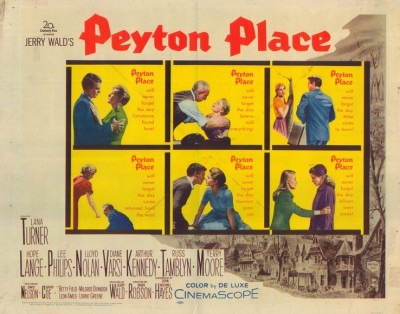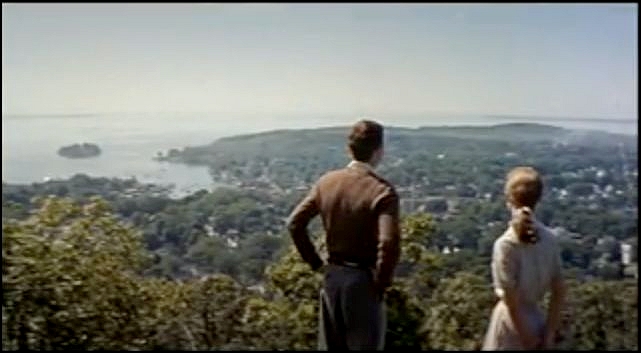Peyton Place (1957)
Dir. Mark Robertson
For fans of the television show Twin Peaks (1990-1991), Peyton Place is important to film to view. David Lynch has acknowledged its influence on the show. There are many similarities between both the television show and the film: the main source of employment is a mill; many of the characters are high school teenagers; the postcard images of a small town and the values of its community. But most importantly is the dramatic tension in concealing secrets. Of course, Twin Peaks was marketed as a murder mystery: who killed Laura Palmer? In Peyton Place, there is a desire to know each others' secrets, which generates most of the narrative tension. The patrons of Peyton Place constantly watch each other, causing one another to be conscious of their own looking.
Peyton Place is also know for its powerful use of Cinemascope photography. There are many breathtaking shots of New England that I am sure play better on the big screen. Cinemascope and Cinerama were new technologies created in response to the popularity of television and the changing leisure habits in the USA.
But it would be wrong to suggest that the widescreen images of Peyton Place are there just for purely spectacle means. These gorgeous shot must be considered in relation to the space the characters inhibit. The small town of Peyton Place is where sexuality and intimacy are taboo. These secret places, by way of contrast, are where the young characters can escape to in order to be intimate and to express their feeling...one of many things to enjoy about Peyton Place.







